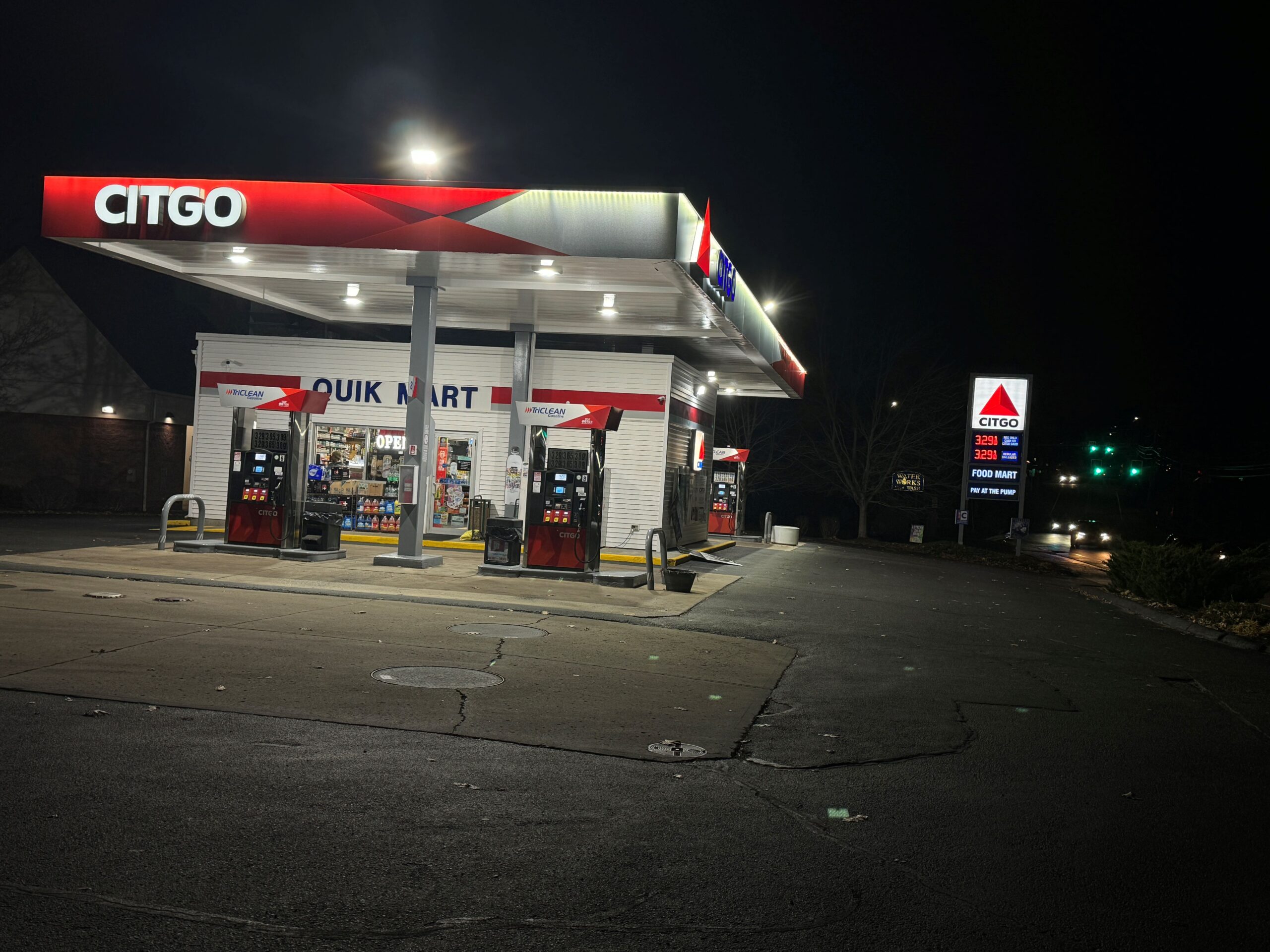
Has your gas station become just another pit stop on the highway? In today’s fiercely competitive fuel retail market, standing out isn’t just about competitive prices – it’s about creating a memorable brand that customers instantly recognise and trust. 🚗⛽
From the iconic Shell yellow seashell to BP’s distinctive green and yellow sunburst, successful gas station brands have mastered the art of creating lasting impressions. Your station’s brand identity goes far beyond just a logo or color scheme – it’s about crafting a complete customer experience that turns casual drivers into loyal patrons. With modern consumers expecting more than just fuel, your branding strategy could be the difference between being a forgettable fuel stop and becoming a preferred destination.
Let’s explore the key elements that make gas station branding successful, from creating a compelling visual identity to implementing digital marketing strategies that drive customer engagement. We’ll dive into proven approaches that can transform your gas station into a recognized and trusted brand in your community. ⭐
Essential Elements of Gas Station Brand Identity
Logo Design and Visual Impact
A gas station’s logo must be instantly recognisable and memorable, especially from a distance. Modern logos typically incorporate dynamic elements that suggest motion, energy, or forward momentum while maintaining simplicity for maximum impact.
Color Schemes for Brand Recognition
Strategic color selection plays a crucial role in brand differentiation and visibility:
| Color Choice | Psychological Impact | Common Usage |
|---|---|---|
| Red | Energy & Urgency | Price displays |
| Blue | Trust & Reliability | Corporate elements |
| Green | Environmental focus | Eco-friendly brands |
| Yellow | Optimism & Value | Shell-type brands |
Architectural Style and Station Layout
Key architectural elements that define successful gas station branding:
- Distinctive canopy design
- Modern pump islands with branded elements
- Clear traffic flow patterns
- Integrated convenience store design
- Well-lit forecourt areas
Signage Standards and Visibility
Effective signage implementation requires:
- High-visibility pylon signs with LED price displays
- Consistent branded elements across all touchpoints
- Strategic placement for maximum visibility from major roads
- Illuminated signage for 24/7 recognition
- Weather-resistant materials for durability
The visual cohesion between these elements creates a strong brand identity that customers can recognise from a distance. A well-executed brand identity sets the foundation for the overall customer experience, which shapes every interaction at the station.
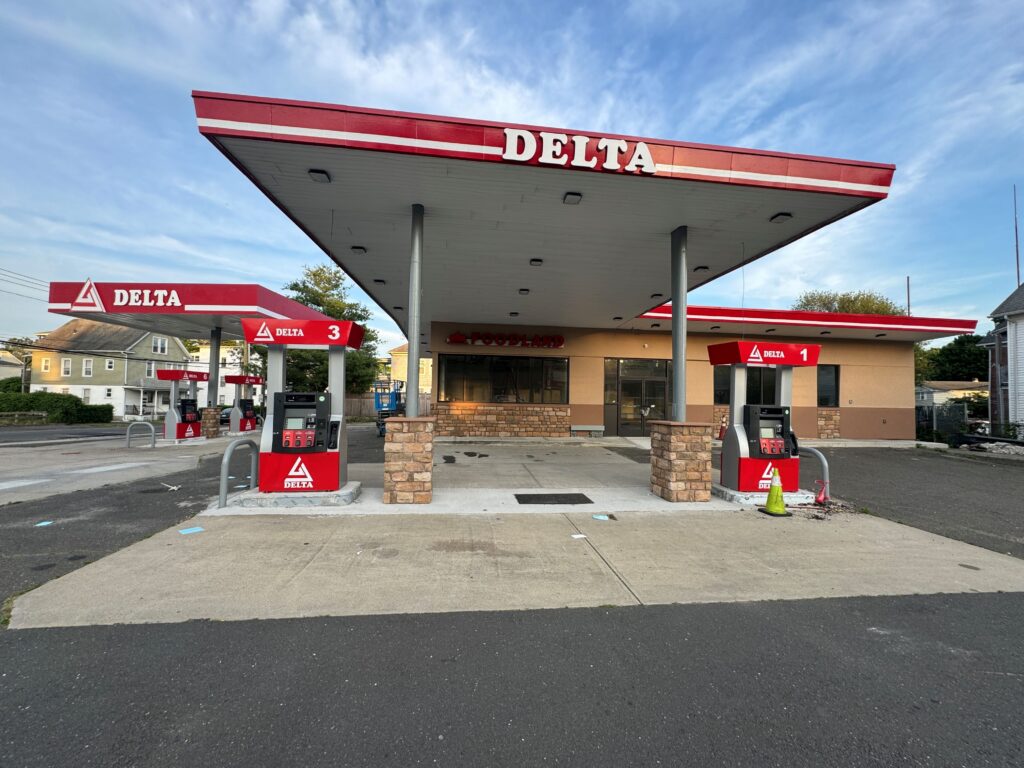
Brand Elements for Gas Stations
Brand Voice and Messaging
Your gas station’s brand voice and messaging form the foundation of your customer communications and market positioning. A well-crafted brand voice helps distinguish your station from competitors and builds lasting customer relationships.
Key components of effective gas station brand messaging:
- Reliability and Trust
- Service Quality
- Community Connection
- Environmental Responsibility
- Value Proposition
| Messaging Element | Purpose | Example |
|---|---|---|
| Tone | Establishes personality | Professional yet friendly |
| Value Statement | Communicates core benefits | “Quality fuel, fair prices, always” |
| Tagline | Creates memorable impression | “Powering your journey forward” |
| Safety Message | Builds trust | “Your safety is our priority” |
To develop an effective brand voice:
- Identify your target audience (commuters, truckers, families)
- Define your station’s unique selling points
- Create consistent messaging across all touchpoints
- Incorporate local community elements
- Maintain professional yet approachable language
Your brand voice should reflect both your service quality and community values while highlighting your competitive advantages. Whether you’re a premium fuel provider or value-focused station, your messaging must align with your market positioning and customer expectations.
Now that we’ve established the fundamentals of brand voice and messaging, let’s explore how these elements integrate into the overall customer experience design.
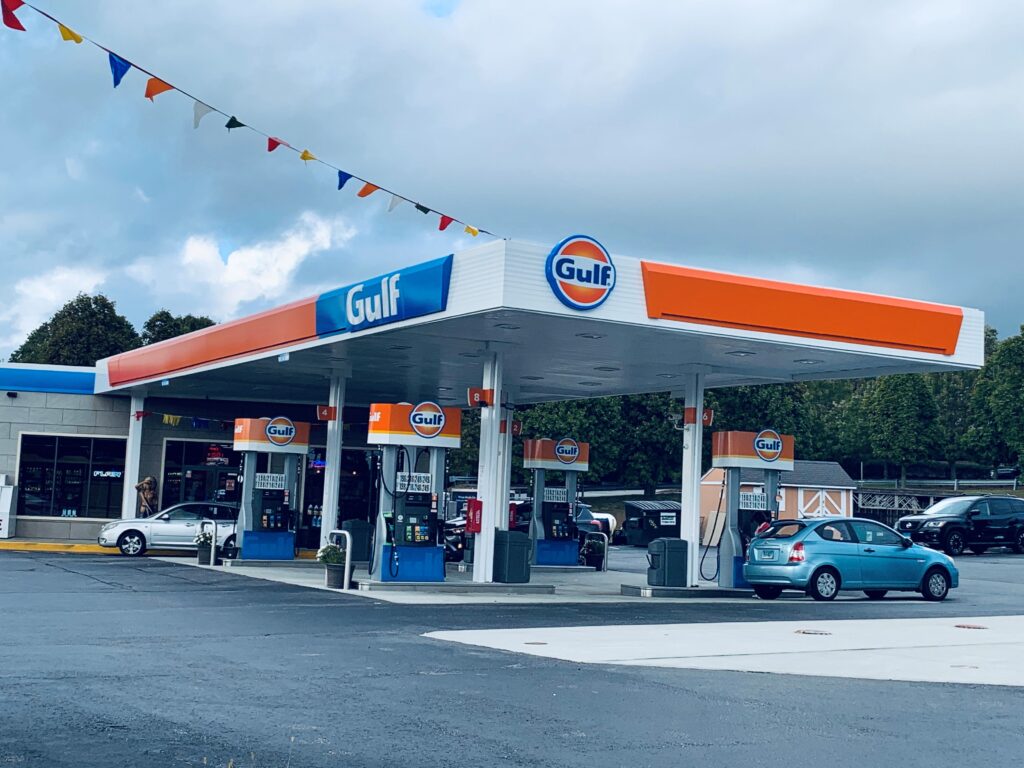
Customer Experience Design
Forecourt Layout and Accessibility
A well-designed forecourt is crucial for customer satisfaction and efficient traffic flow. Consider these essential elements:
- Clear entrance and exit paths
- Adequate spacing between pumps
- Visible pricing signs
- Well-lit canopy areas
- Accessible parking spaces
| Forecourt Element | Purpose | Impact |
|---|---|---|
| LED Canopy Lights | Safety & Visibility | 30% better visibility |
| Wide Lane Design | Traffic Management | 40% reduced congestion |
| Digital Price Signs | Information Clarity | 25% faster decision-making |
Store Design and Product Placement
The convenience store layout should maximize both sales and customer flow:
- Strategic placement of high-margin items near entrances
- Clear sight-lines to security mirrors
- Easy-to-navigate aisles
- Impulse purchase zones near checkout
- Clean and accessible restrooms
Customer Service Standards
Implement consistent service protocols:
- Staff uniform standards
- Greeting procedures
- Response time targets
- Clean facility maintenance
- Emergency situation protocols
A successful gas station must maintain cleanliness standards across all touchpoints. Staff should be trained to monitor fuel islands, promptly address spills, and ensure proper functionality of all equipment. Regular customer feedback surveys can help identify areas for improvement and maintain service quality.
Now let’s explore how digital presence can enhance these physical experiences and create a cohesive brand image across all channels.
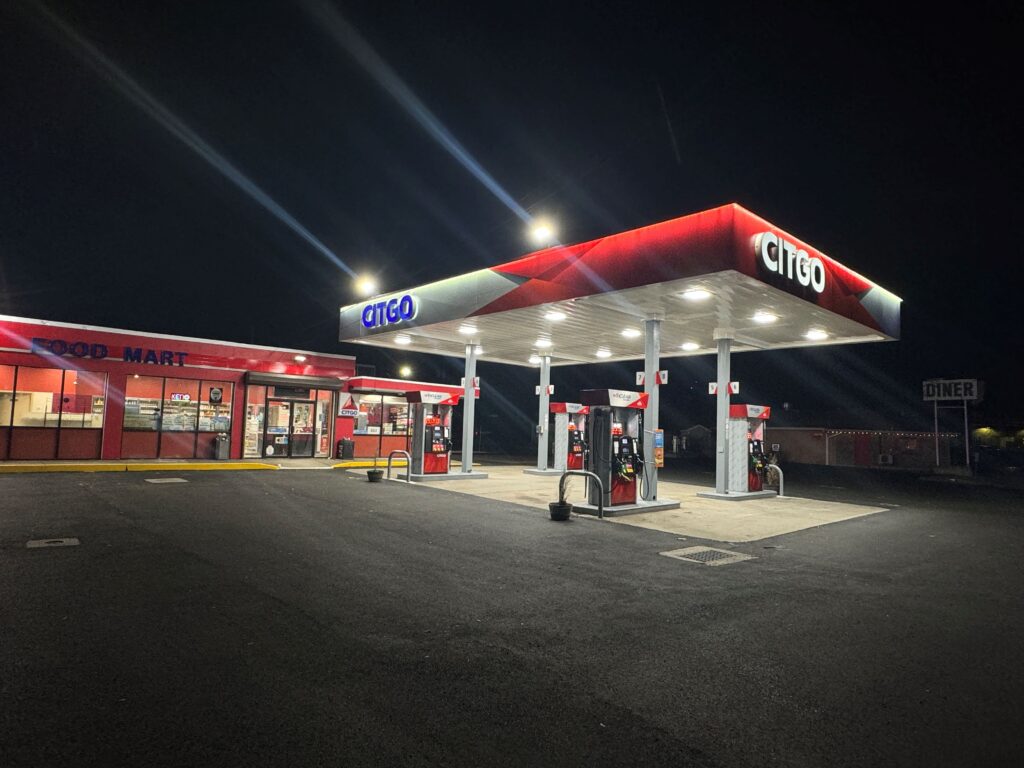
Digital Brand Presence
Mobile App Integration
A robust mobile app serves as the cornerstone of modern gas station operations, offering:
- Real-time fuel pricing updates
- Loyalty program management
- Digital payment integration
- Store locator with navigation
- Fuel consumption tracking
Social Media Strategy
Active social media presence builds community engagement through:
| Platform | Primary Content Focus |
|---|---|
| Station upgrades & amenities | |
| Community events & promotions | |
| Real-time updates & pricing | |
| Business partnerships & news |
Online Reviews Management
Implement a systematic approach to handle customer feedback:
- Monitor major review platforms (Google, Yelp)
- Respond promptly to all reviews
- Address negative feedback professionally
- Highlight positive experiences
- Encourage satisfied customers to share reviews
Location-based Marketing
Leverage geofencing technology to:
- Send targeted promotions to nearby drivers
- Alert customers about special offers
- Provide traffic-based fuel pricing
- Share convenience store deals
Digital Payment Solutions
Modern payment options enhance customer convenience:
- Mobile wallet integration
- Contactless payments
- Pay-at-pump technology
- Digital receipts
- Automated loyalty points
As gas stations increasingly compete on convenience and service quality, having an integrated digital strategy becomes crucial. Strong digital presence not only enhances customer experience but also provides valuable data insights for future improvements. Now, let’s explore how to differentiate your brand in this competitive market.
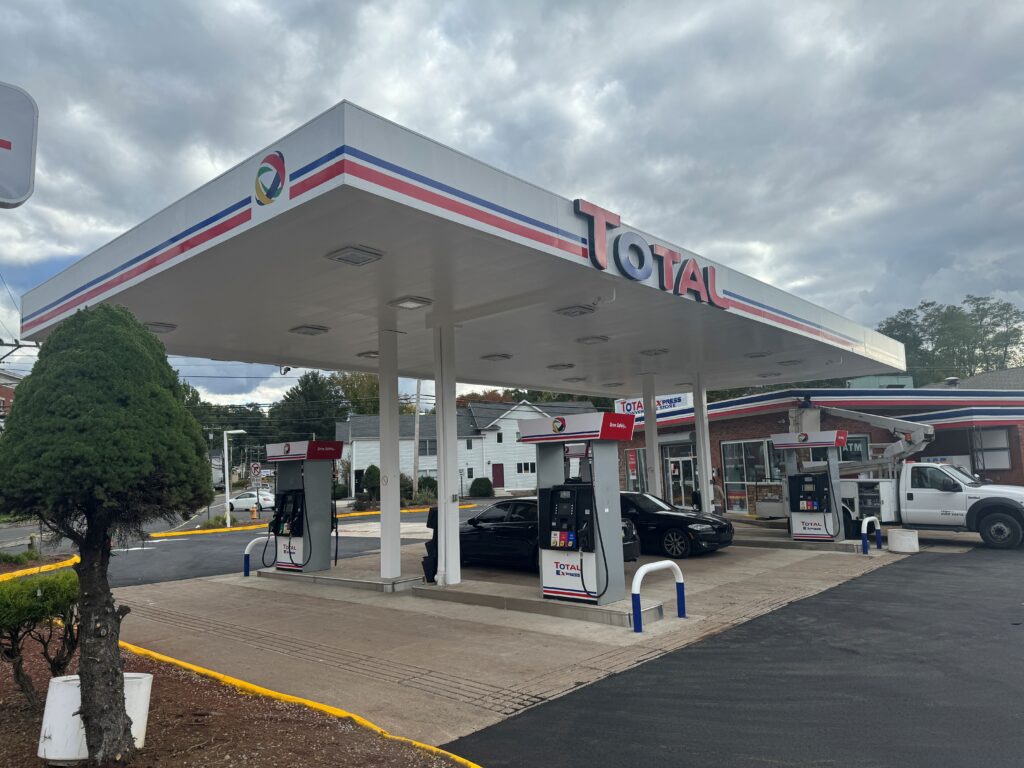
Brand Implementation
Staff Training and Brand Culture
Training staff is crucial for successful gas station branding implementation. Employees must understand and embody the brand values through:
- Daily customer interactions
- Consistent service delivery
- Proper uniform presentation
- Brand voice communication
- Safety and cleanliness protocols
Signage and Way-finding
Effective signage creates brand recognition and helps customers navigate the facility:
| Signage Type | Purpose | Key Elements |
|---|---|---|
| Main Pylon | Brand visibility | Logo, pricing, illumination |
| Directional | Navigation | Clear arrows, symbols |
| Pump Toppers | Product info | Promotions, fuel grades |
| Building Signs | Location marking | Brand colors, typography |
Promotional Materials
Consistent promotional elements reinforce brand identity through:
- Branded fuel receipts
- Loyalty program materials
- Seasonal promotions
- Digital displays
- Point-of-purchase displays
Franchise Guidelines
Standardized guidelines ensure brand consistency across locations:
- Color palette specifications
- Logo usage rules
- Typography standards
- Environmental design requirements
- Marketing material templates
Maintaining these brand standards helps create a unified customer experience across all touchpoints. With proper implementation at the staff and visual levels, gas stations can build strong brand recognition and customer loyalty.
Now, let’s explore how to measure the success of these branding efforts through various metrics and KPIs.
Conclusion
Building a strong gas station brand goes beyond just creating a logo or choosing colors – it requires careful implementation across all touchpoints to create a cohesive customer experience.
To succeed in today’s competitive fuel retail market, focus on consistent brand execution through your signage, forecourt design, convenience store layout, staff training, and customer service protocols. A well-implemented brand strategy will help differentiate your station, build customer loyalty, and drive long-term business growth.
